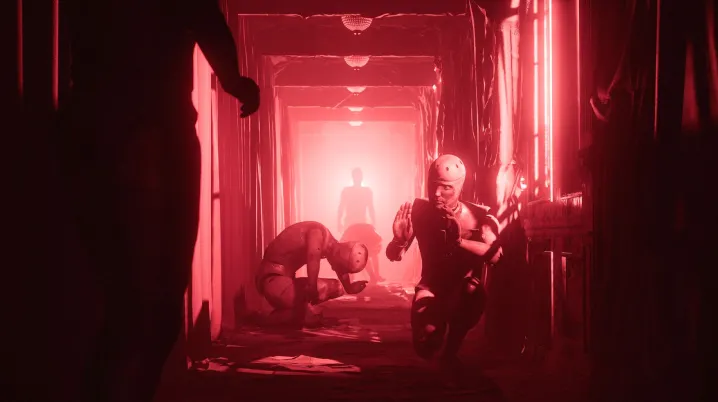When asking a Bloober Team developer to give me his elevator pitch for Layers of Fear at this year’s Game Developers Conference, it became clear just how complicated the project is. On paper, it’s a remake of both the original Layers of Fear and its sequel, rolled into one Frankenstein package. That’s underselling it, though. The package contains tons of new content as well, which extends both games and retroactively links their stories together. “Remake” doesn’t really scratch the surface at all.
I finally learned the extent of the project’s scope when I played excerpts from three of its chapters at GDC. With its impressive visual upgrade, a gameplay-changing mechanic, and loads of new content, Layers of Fear looks like it’s going well beyond the call of duty to create a truly definitive home for the series.
Braving the darkness
My demo begins in Chapter 1, which is entirely new to the series. Rather than controlling the first game’s painter or the second’s actor, I’m controlling a writer. Notes tell me that she’s won some kind of writing fellowship, which has allowed her to hole up in solitude at a lighthouse. The short snippet sets up her story with some traditional first-person exploration. There’s a brief scare as I uncover a painting that menacingly flashes, but the segment seems to exist more as an introductory frame tale. Bloober didn’t quite reveal how it connects to the other stories, but I already have some guesses.
When I jump to the next chapter, I’m in familiar territory. Now I’m in a slice of the original Layers of Fear as I control its painter in the midst of creating their magnum opus. It’s here that I get to focus on the remake’s impressive visual overhaul, made possible thanks to Unreal Engine 5. The biggest, and most impactful, change is to the game’s lighting. The original release dealt more with patches of blackness between more well-lit rooms. Spaces are much more dynamic this time around, with rays of blue light streaking through windows or candles more naturally illuminating pockets. That ups the atmosphere, making it feel more like a true haunted house.
Light would play an especially big role when I flashed forward to Chapter 5, another entirely new segment. The more puzzle-centric section had me picking up a lantern, which would serve multiple roles during the demo. For one, it’s just practical. By holding it up, I can illuminate dark hallways (and really get the most out of the lighting boost). It’s also a puzzle-solving tool that’s used to destroy creepy objects and a weapon. Shine it at an approaching ghoul for a few seconds and they’ll collapse into a puddle of muck. Bloober says that the Layers of Fear 2 sections of the remake will have a similar mechanic by using a flashlight that previously only appeared in one of its DLCs.
That extra touch brings a much-welcomed addition to the original games’ somewhat thin puzzle exploration. There’s a bit more to do this time aside from simply walking through spooky hallways and reading the occasional note. The back half of Chapter 5, for instance, has me hunting down gears to open a locked door. To do that, I need to traverse a maze of pitch-black, labyrinthian hallways. I need to shine my lantern to find my way through it while using it to melt the monsters hiding in the shadows. It feels less like a tone piece and a bit more like a full-featured horror game, though it didn’t scare me so much as it unnerve me.

I’m curious to see how it all comes together in the final project, which sounds like a fairly radical overhaul of the preexisting games. How will the first two Layers of Fear games narratively come together? Is the writer’s story more than a simple bookend? And how will the lantern and flashlight alter gameplay segments from the original?
I’m still left with plenty of questions, but I at least have a better grasp on the project and its role in the series. It feels like Bloober Team organizing all of its notes to turn two niche horror games into one more complete experience.
Layers of Fear launches this June for Xbox Series X/S, PS5, and PC.



